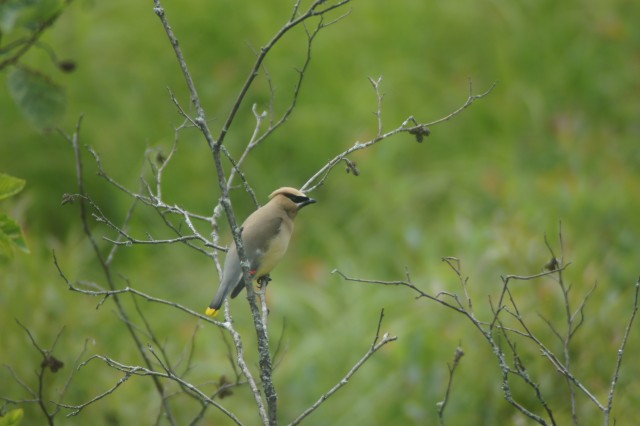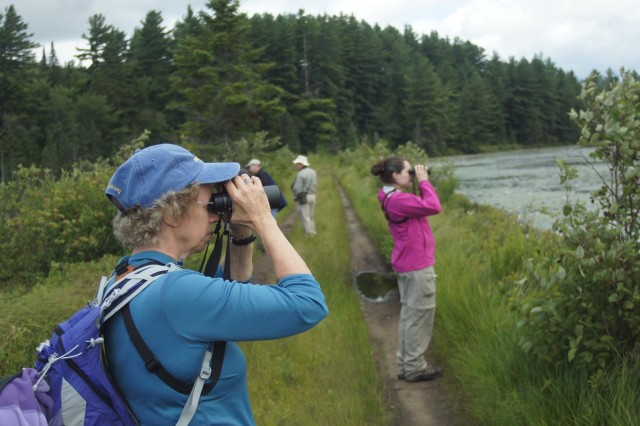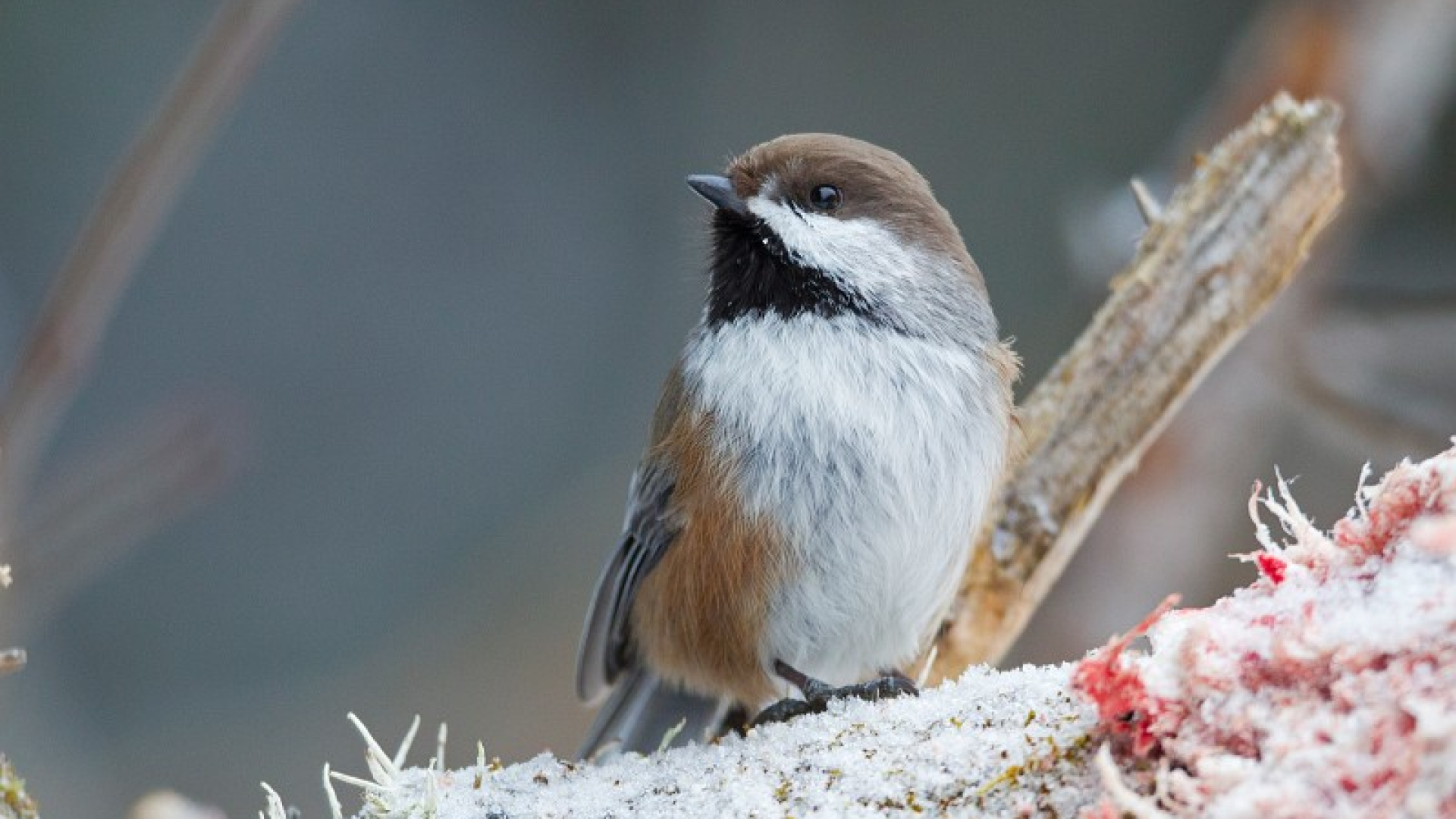This past weekend, I helped lead a Wild Center birding trip to Madawaska – one of my favorite places in the Adirondacks. Madawaska is a collection of public land bordered by private easement land, such as the Santa Clara Tract, and the area is composed of a diverse array of habitats. These varied habitats contain many bird species as a result, but we were chiefly interested in the boreal habitats and their sought after bird species.
We carpooled our way along Blue Mountain Road, stopping in a few places to look for birds. At one point I heard a Canada warbler singing outside the window and we stopped to find it. Unfortunately, the warbler kept hidden in its thick, brushy habitat, but it was nice to hear a bird singing – after all, most of our birds have grown quiet as summer has progressed. As we were looking for the Canada warbler, we did find a few other birds including a blue-headed vireo, two yellow-bellied sapsuckers, and a yellow-rumped warbler. I hooted for barred owl to see if anyone would respond, and we were soon surrounded by an entourage of calling birds, angrily looking to escort the owl from the area.
The two sapsuckers we had already seen came in calling loudly, and my calls were quickly answered by a black-backed woodpecker, which never came into view. Two other woodpecker species did come in and join the sapsuckers however – a hairy woodpecker and a northern flicker, the calls or which were echoed by another flicker in the distance. My calling also brought in a red-breasted nuthatch, common grackles, and a string of blue jays, among others. We also heard a second Canada warbler – this one more distant than the first. And we were surprised to hear a singing northern waterthrush – another nice species for our trip.
After reaching Indian Rock parking area, we began the walk into Madawaska Pond. We found a few warbler species such as black-throated blue and magnolia mixed in with the black-capped chickadee flocks during our walk, but for the most part we had difficult going in finding many warblers. We fared much better with finding boreal chickadees, and not far into the walk we found one mixed in with a flock of black-caps. We soon realized there were at least four or five boreal chickadees in the group and everyone was excited to get good looks at them. We also discovered a family group of yellow-bellied flycatchers and even saw glimpses of a parent feeding a young bird.
As we approached the pond itself, we found another mixed flock of birds – this one containing another boreal chickadee as well as red-breasted nuthatch, black and white and yellow-rumped warblers, and a variety of recently fledged sparrows. Another black-backed woodpecker called, but like the first black-backed, this bird didn’t come into view either. We did see a lone gray jay, and the bird flew across the expanse of the bog and out of view. 
The brushy areas bordering the pond itself were full of common yellowthroats and palm warblers, and we also flushed a Lincoln’s sparrow as we explored a variety of late summer wildflowers and found a few pickerel frogs as well. There was also a common loon on the pond, a female hooded merganser, and a quick look at another duck which we thought was likely a young ring-necked duck. An American kestrel also hunted over the bog mat.
We turned around, hungry for lunch, snacking on blueberries as we walked. The day was getting warm and breezy, and while that quieted the birds down, we still found another boreal chickadee on our way back to the cars – which our youngest participant was able to photograph. At ten years old, he was already quite a photographer! Our final stop also offered us photographic opportunities when we stopped along Blue Mountain Road for a cooperative great blue heron and a flock of cedar waxwings. The heron brought our total tally to 50 species of birds – a nice number for an August day.




